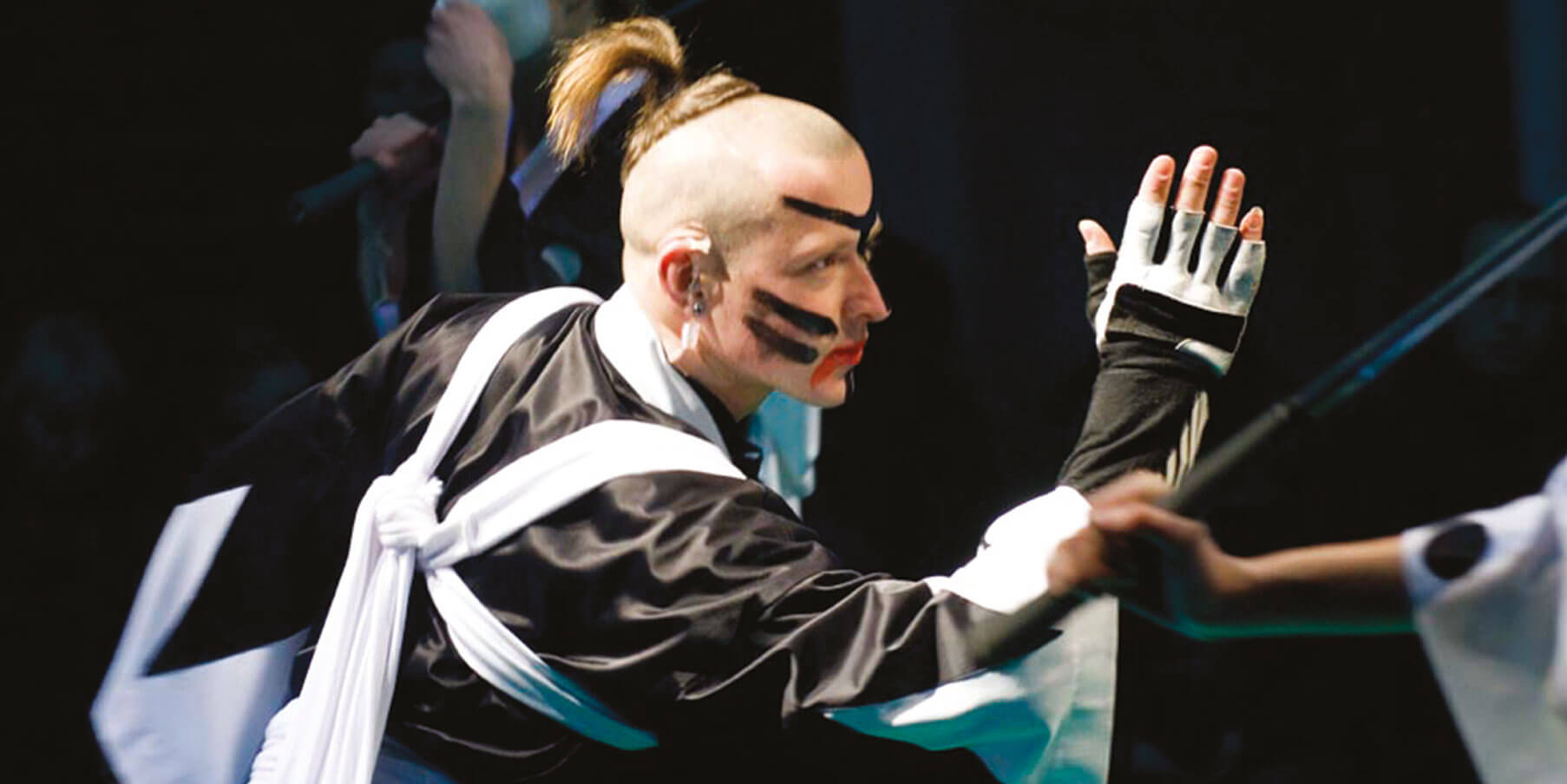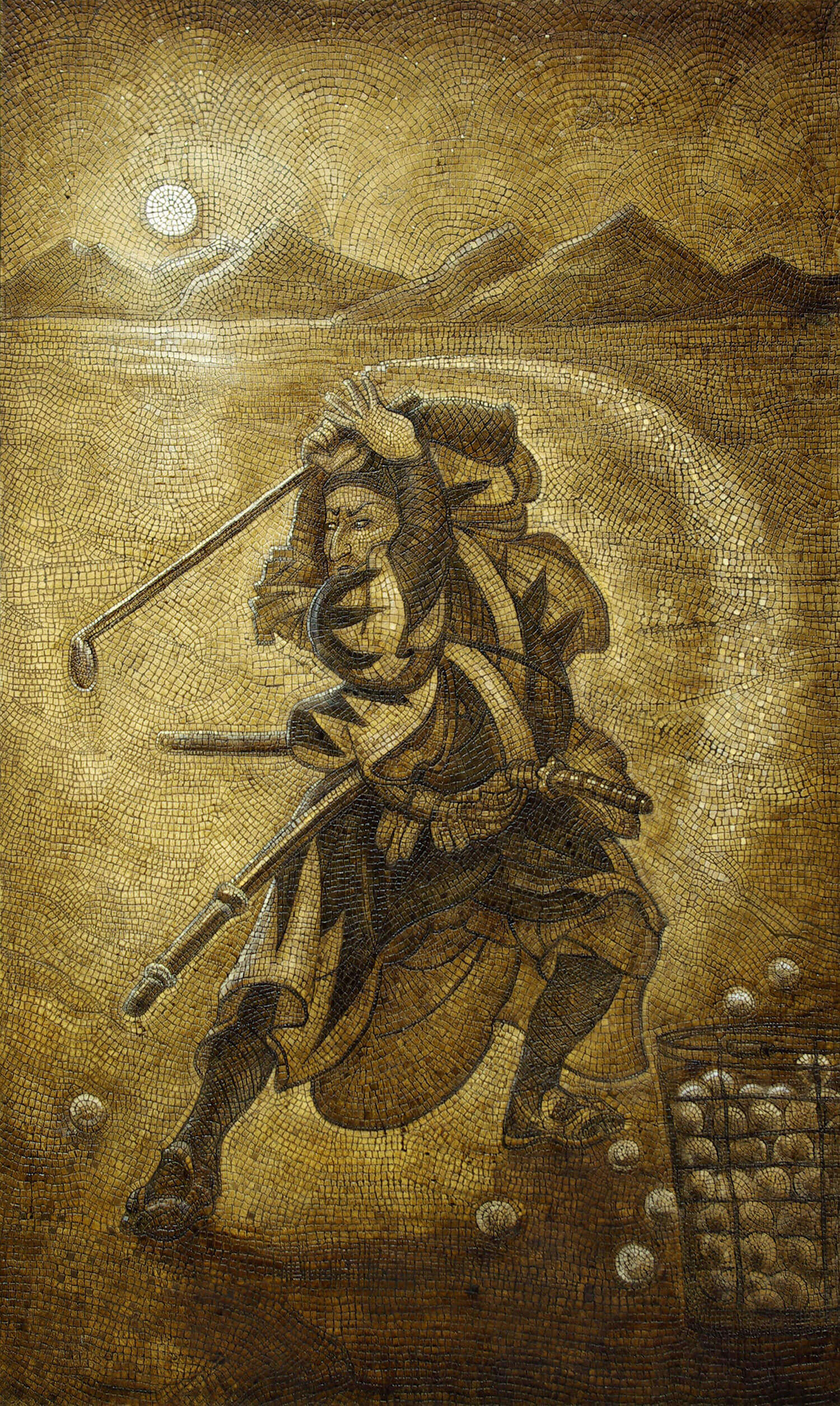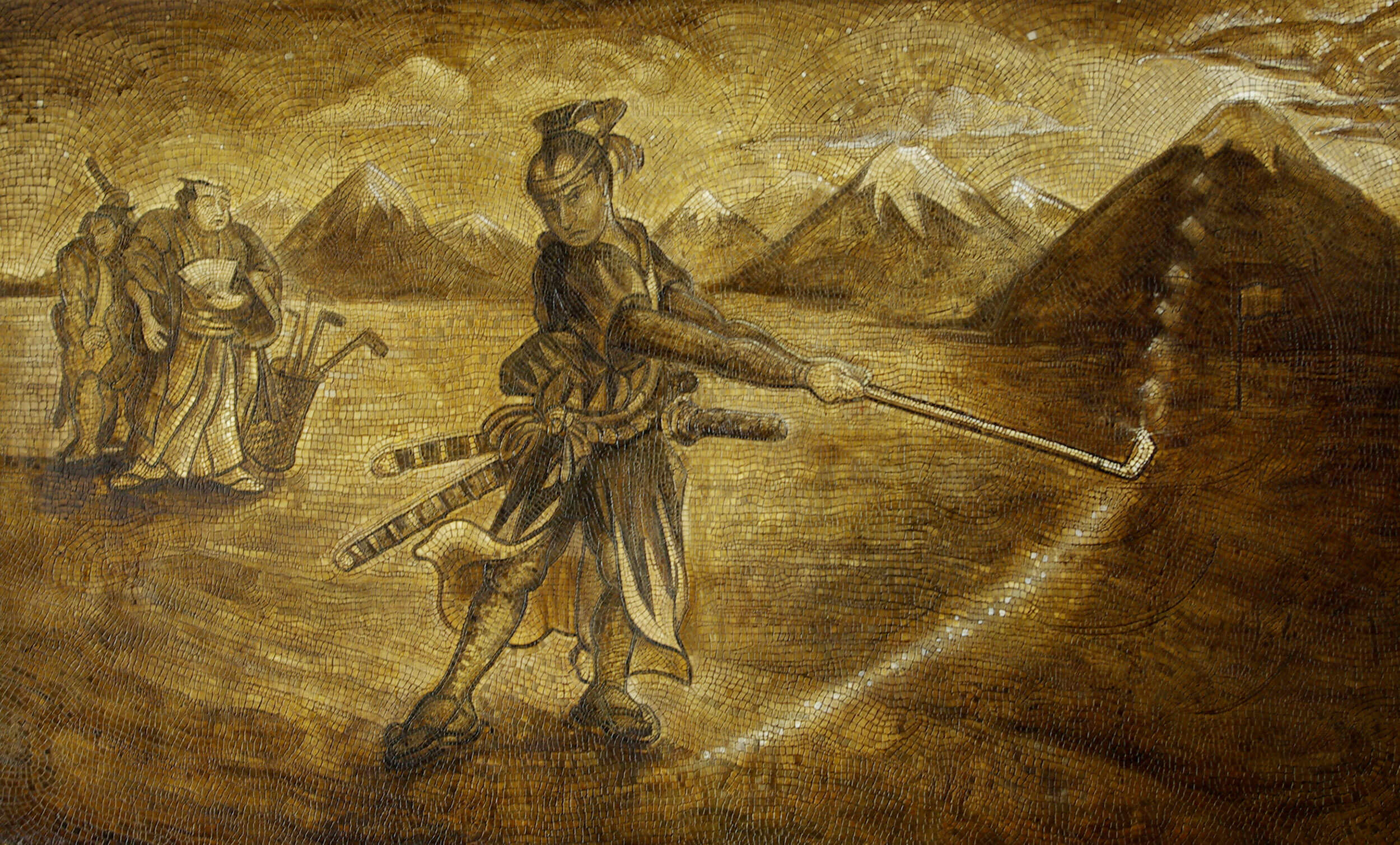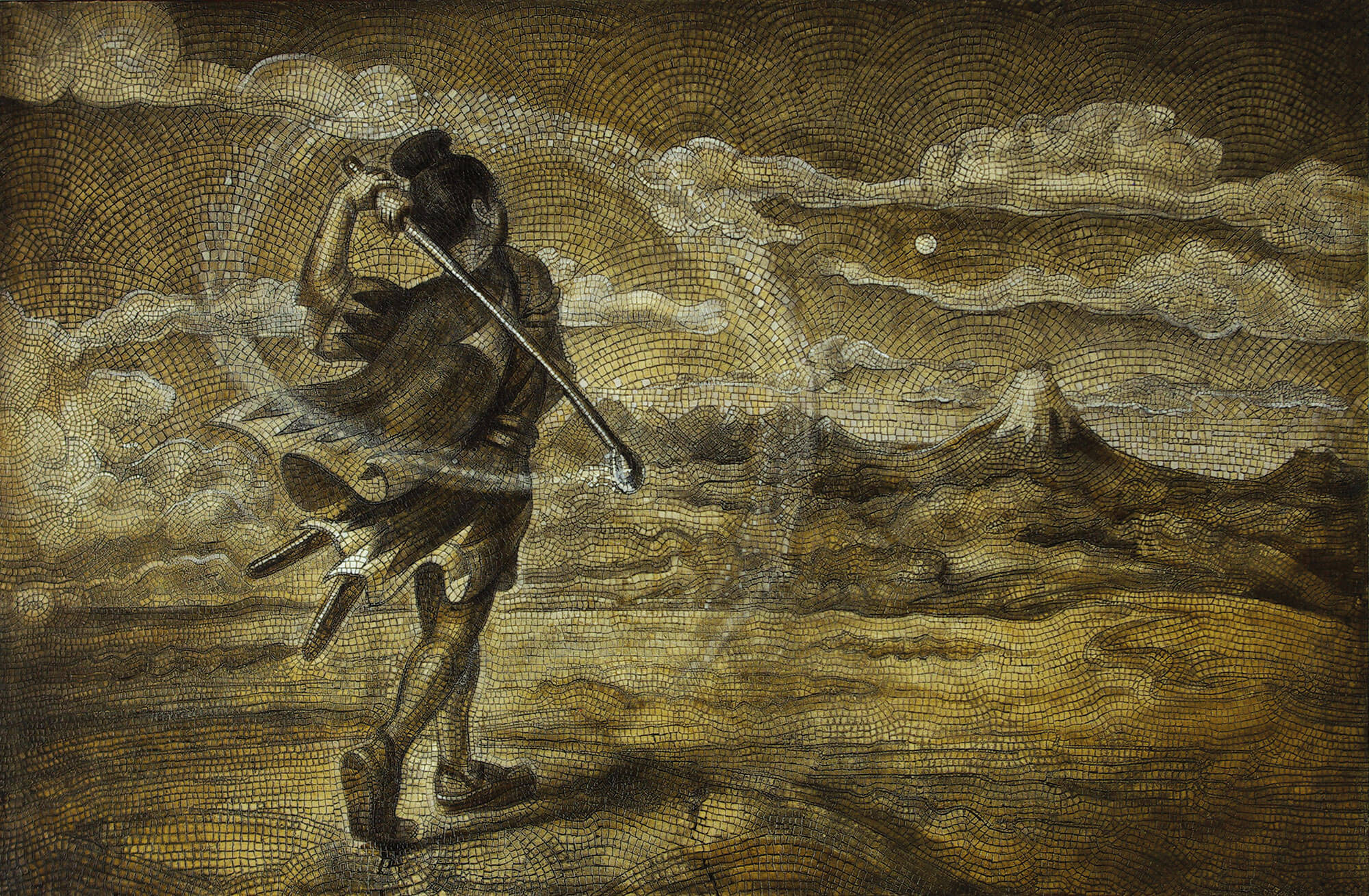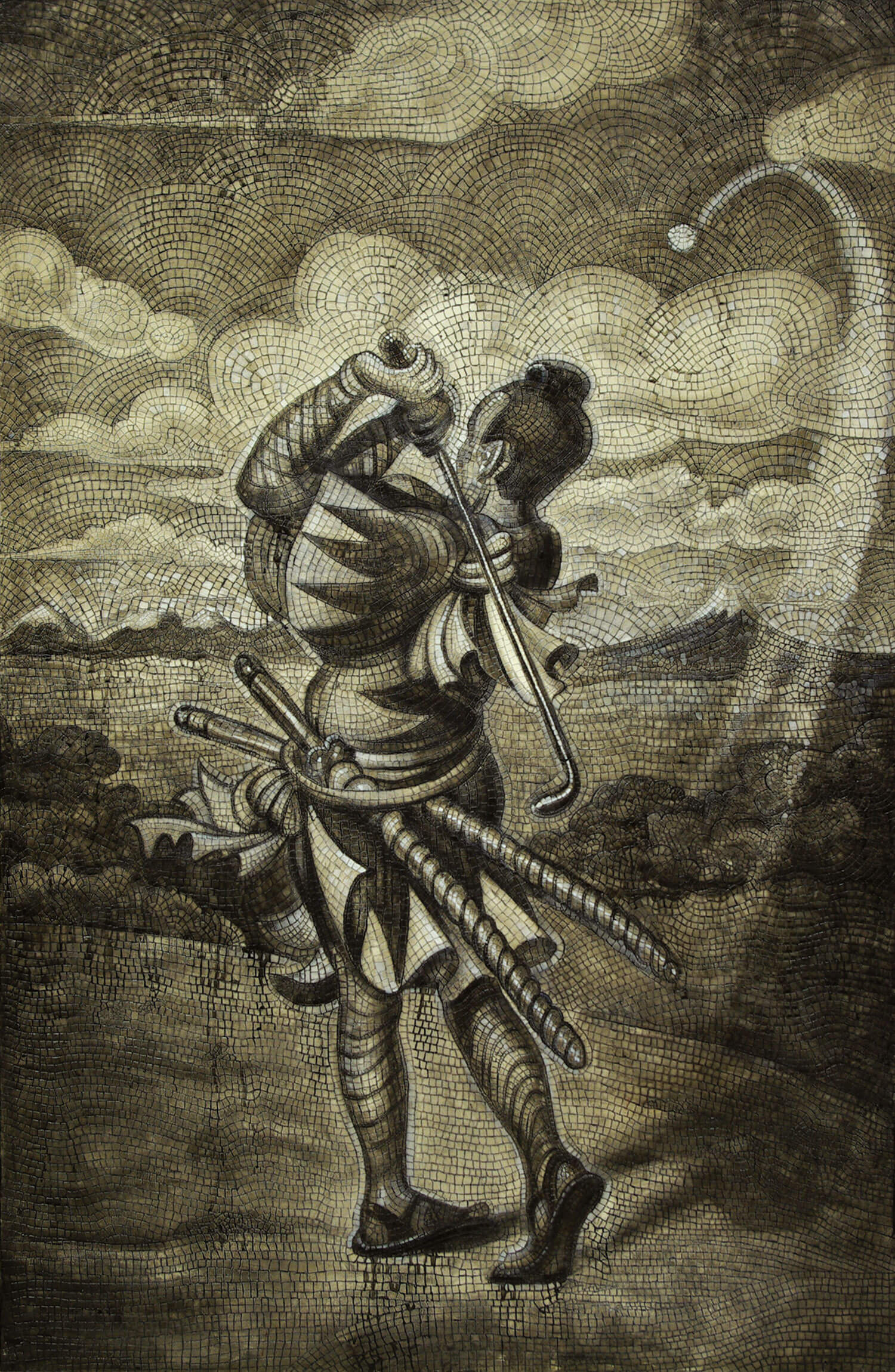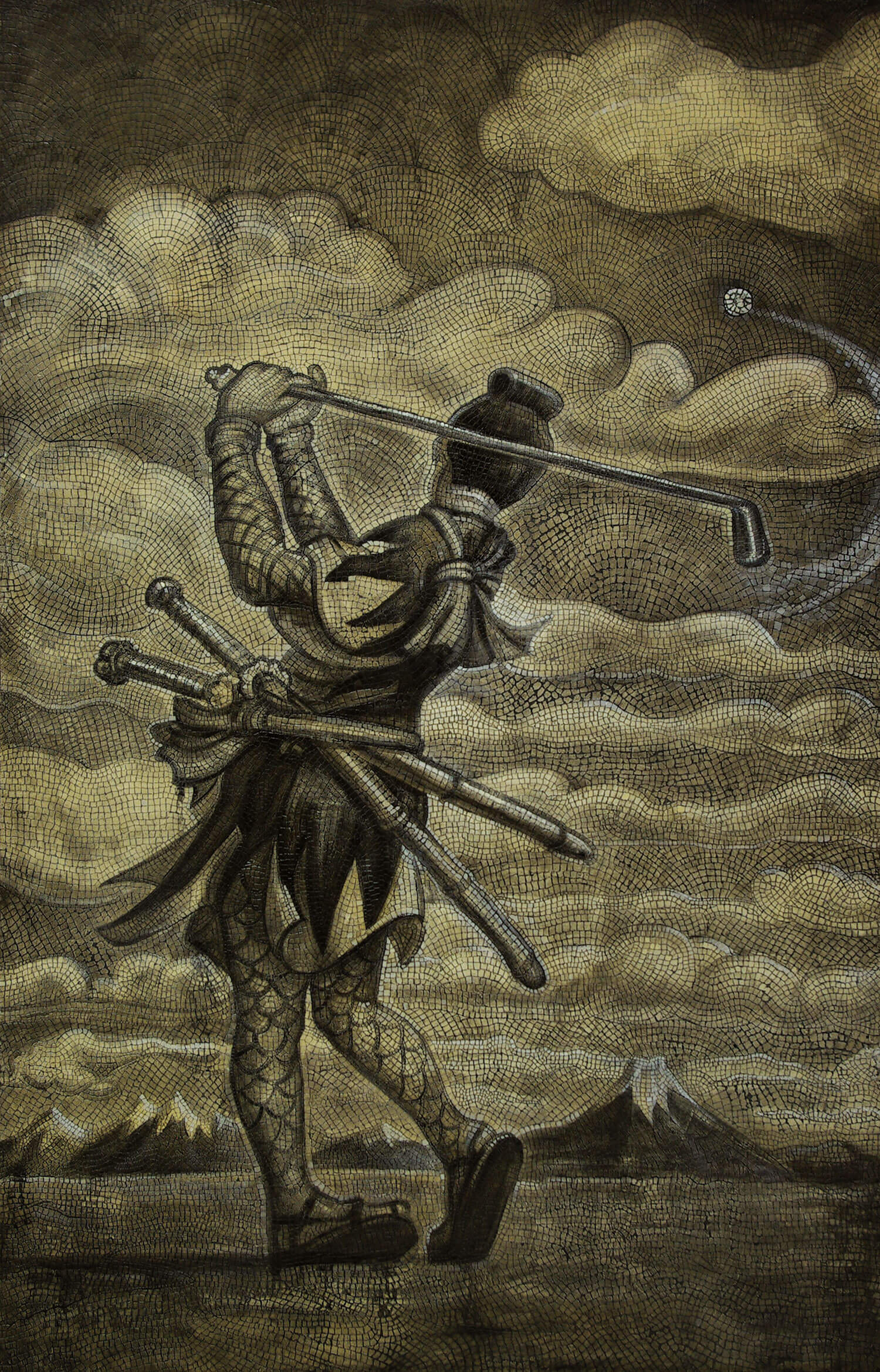FUJI-GOLF
HIGH FUSION BY ANATOLIY GANKEVICH
What is common between the Japanese warrior, trained technique of impeccable combat near Mount Fuji, and the bored ancient shepherd, wandering the Mediterranean dunes, hitting with stick on round stones and moving them into rabbit holes? Both of them have been forgotten for a long time, tracing only fragmentary reflections of their own existence in modern culture: the first one remained in the noble code of samurai honor and perfection of martial arts; the second one created the ancient popular fun, which, according to legend, came from his unpretentious pastime and became a golf game. And both of them, obviously, live in the creative Imagination of Anatoliy Gankevich.
In his new project, “Fuji-Golf” artist Anatoliy Gankevich constructs a virtual space, which overcomes the apparent absurdity of combining diverse cultural traditions and phenomena – Western and Eastern ideas about elitism, Japanese and Classical antiquity “high genre” in art. Using the unpopular postmodernist argo, the project “Fuji-Golf” could be called a pastich, indeed, Gankevich′s artistic “opera” is composed of different excerpts of already existing “melodies”. However, behind the imaginary kaleidoscopic cultural patterns used by the author, there is extraordinary internal integrity, which, likely, makes the project beyond the brackets of the postmodern cliche.
According to Anatoliy Gankevich, the project “Fuji-Golf” is an attempt to combine the finest, light Japanese engraving on white paper with heavy, brutal mosaic panels of Western Europe: ink and smalt, thin paper and coarse cement. The basis of the exhibition is seven large-format paintings made in the original technique used by the author since the early ’90s. Anatoly Gankevich manages to simulate on canvas mosaic effect using traditional painting techniques due to the application of pasty relief stroke. The complex play of the texture of the painterly surface of the canvases combined with exquisite monochrome, compositional completeness of the artworks and lyrical unpredictability of the plots allowed the author to achieve a combination of several cultural and aesthetic paradigms. Antique mosaic, Japanese engraving, an irony of the contemporary art do not even conflict on the canvases of Gankevich, but organically complement each other.
We see seven samurais in traditional military armor in the paintings from “Fuji-Golf” series. However, unlike the characters of the eponymous Akiro Kurosawa′s epic, these soldiers prefer elegant westernized leisure which is golf than a bloody showdown with compatriots. The sword is replaced by a stick. They use the difficult technique of martial arts to achieve the best position of the legs and concentrate the energy when hitting the ball. It seems that these fearless and indefatigable Zen Buddhists understand that they can use a stick to pave the way to nirvana as well as a sword. Especially, if they choose one of the main archetypes of Japanese culture, Mount Fuji, instead of the hole, where samurais direct all their blows with their inherent knight maximalism and cosmic aestheticism.
The meditative mood of the paintings on the “Fuji-Golf” exhibition is organically complemented and enhanced by multimedia effects: music, accompanying video art, as well as the performative component of the project. In the exhibition hall, we listen to traditional Japanese music, interrupted by the sharp sounds of a stick that hits the ball. It begins to seem that “Fuji-Golf” is a kind of picturesque koan, which, like its traditional Zen counterparts, “cannot be understood through logic, cannot be transmitted in words, cannot be explained in the texts and cannot be measured by reason.” However, Anatoliy Gankevich’s video art brings a completely new note to the understanding of the author’s concept. He reveals the next layer of amazingly multi-layered intellectual and visual ideas of the artist, which, like a Russian matryoshka, does not get tired of endless metamorphoses.
We see familiar images of samurais on the screens. Pictures are replaced by one after another, splitting off with the sound of a stick blow, disintegrate with a spray of a pixel mosaic smalto , like the common computer screensavers.
At this moment, the virtuality of what happens is exposed, and we start to feel a subtle revealed relationship between the pseudo-mosaic monumentality of Gankevich’s painting and the fluctuation of the pixel image. The viewer finds himself inside a game with illusions, composed and named “Fuji-Golf” by the author.
It would seem that a game essence of Anatoly Gankevich′s project should assume its interactivity. However, the author deliberately deprives the audience of the opportunity to influence the development of events in any way. The observer can see “Fuji-Golf” from the inside, but cannot change anything in it. The resulting distance between the artwork and its addressee creates a “peeking effect”. The viewer turns into a voyeur, a spy, enjoying the suddenly caught moments of the sacred game of the samurais, and the project “Fuji-Golf” becomes a kind of artistic chronicle of the existence of a non-existent game. The game takes on the features of the illusion (from the Latin “in-lusio” – literally “in-playing”). Here, in Gankevich’s project, the Eastern understanding of the illusory nature of the world and the modern problem of virtualization of human existence get close. Balancing at the intersection of play and seriousness, virtuality and reality, the characters of the project “Fuji-Golf” show the viewer the eternal sacred dance of the illusion of being.
